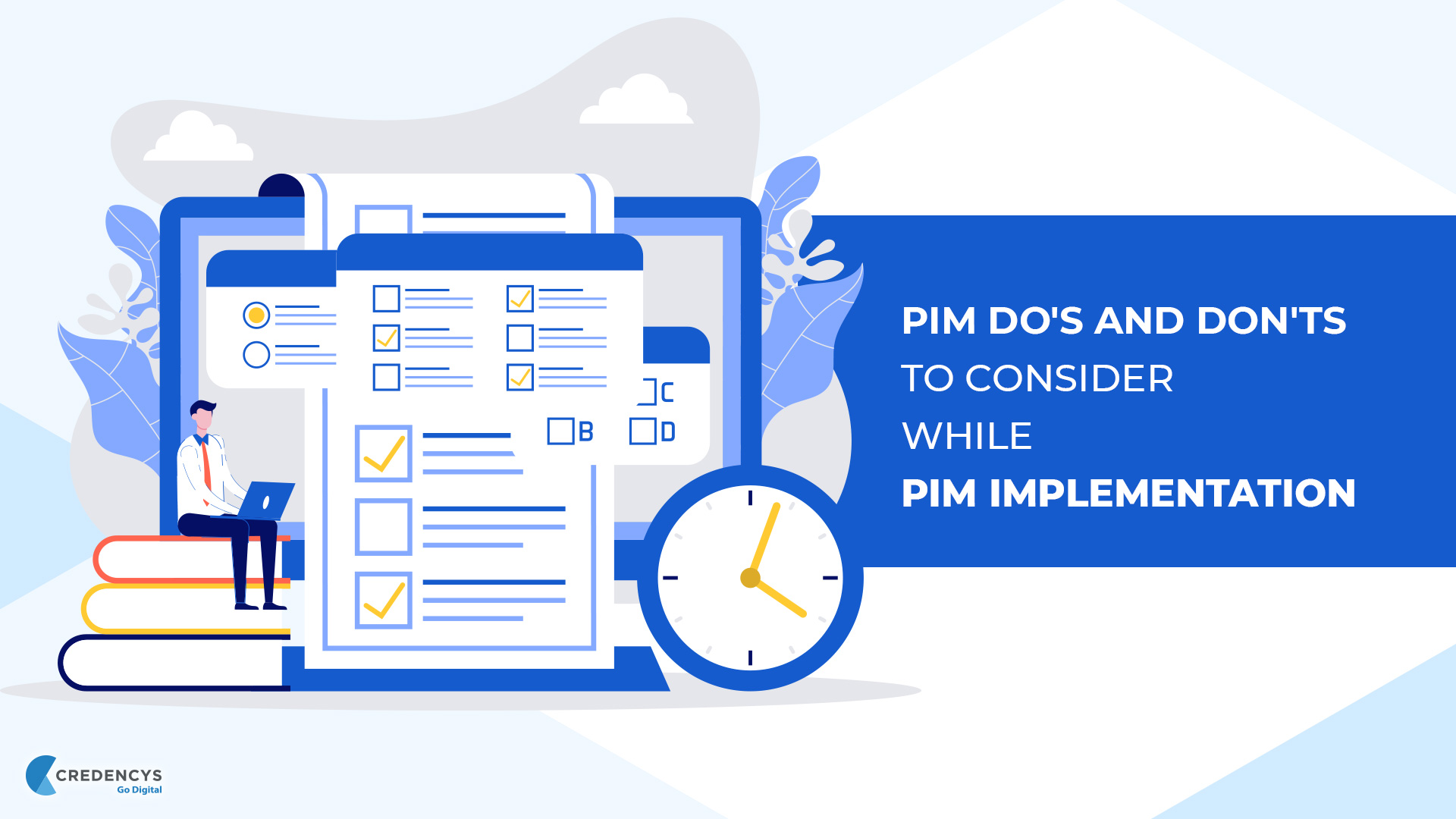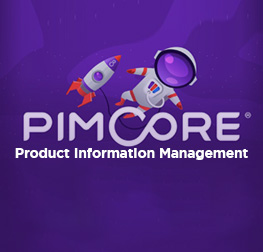Do's and Don'ts to consider while Product Information Management Implementation [5 & 7 is Noteworthy]
Everyone in the competitive business sector is willing to explore and use the Product Information Management Implementation system for improving the success rate of their digital marketing, product sales strategies, eCommerce, and omnichannel presence.
They are keen and happy to use this system to deal with an insurmountable amount of information in their product-focused business.
- What is Product Information Management (PIM)?
- What Kind of Data Handled by Product Information Management (PIM)?
- What Advantages Does Product Information Management (PIM) Offer?
- Key Features and Functions of a Product Information Management (PIM) Implementation System
- Do’s & Don’ts of Product Information Management Implementation
- Wrapping up
What is Product Information Management (PIM)?
Product Information Management (PIM) is referred to as the software which manages the entire data surrounding the products like descriptions, catalogs, sizes, reviews, weights, certifications, and other things.
This information is passed across supply chains, organizations, channels, and customers. Do not forget that PIM is not designed to handle the entire product information and not all information is moved into it as per the needs.
An important principle of the PIM Implementation system is that it contains marketing and sales information at all times. Every user of the PIM system gets more than expected favorable things.
To get exclusive insights about Product Information Management, don’t miss to read What is PIM? – An Ultimate Guide for Product Information Management.
What Kind of Data Handled by Product Information Management (PIM)?
The 4 main categories on which PIM Implementation systems store data are as follows.
Technical data: Technical data in the PIM include but are not limited to the ingredients, material, weight, size, and color.
Usage data: Product descriptions with how-to, where-used, and sample usage suggestions belong to the usage data in the product information management system.
Emotional data: Emotional data in the product information management system are rich product descriptions, imagery, and stories that help a lot to make emotional connections with buyers.
Media files: Media files in the PIM system are videos, images, and PDFs. Everyone with an expectation to prefer and use the best-in-class nature of the system to store various types of data can prefer and use the PIM hereafter.
What Advantages Does Product Information Management (PIM) Offer?
An excellent PIM system evaluates, manages, and stores data and helps its users to distribute the products. There are so many advantages for every user of the product information management system. However, significant advantages offered by the PIM system are as follows.
1. Maximum efficiency and productivity
A product information management system acts as a central hub for providing the team with a one-stop solution to get the relevant information associated with a specific product. There is no time lost or difficulty trying to find, clean up, or piece together product information.
You can concentrate on onboarding new products and expansion of the product catalog size instead of spending time to access and store data. An efficient method to handle data is helpful a lot to increase the productivity of the business further.
2. Enhanced quality of the product content
Proper use of the product information management system maximizes the possibility that all products will get the complete attention they deserve via enrichment. Every customer expects to read complete and accurate product descriptions together with images and videos. They get confused or go to another retailer when they cannot get what they want or cannot find what they seek.
3. Increased return on investment from cost savings and efficiency gains
A well-designed, modern, and user-friendly product information management system transforms the number of sales you get. Companies use the PIM and make certain that maximum conversion rates as well as reduced product returns. A good PIM is fast and cheap to deploy with business benefits that can be easy to measure.
Visit What Are the Benefits of PIM Systems? to learn about more benefits of the Product Information Management solution.
Key Features and Functions of a Product Information Management (PIM) Implementation System
A product information management system helps companies to harmonize and centralize the product data for its successful operation. Almost every eCommerce shop owner needs a good PIM to collect and store data associated with products in a single catalog. These data can be used for analytics and ad purposes.
The following details explain to you the important features and functions of a product information management system.
1. Ease of data collection and importing
Data importing is an important feature of the product information management solution. Your customers seek how to import content and product data from any place devoid of getting any technical issues, snags, and glitches. These customers wish to access key product data metrics and store their data in a safe place. A good PIM system is helping a lot for easily collecting and importing data.
2. Modern product data analytics features
The ability to analyze the data like a professional is another important feature of the PIM system. You can store and optimize data in one place and make customized reports and find areas to be enhanced quickly.
An effective PIM system must be well-equipped with built-in functions for analyzing and aggregating the product data from the complete page views and listings to the added-to-cart information.
3. Bulk editing capabilities
An outstanding PIM system offers bulk editing capabilities to perform individual product edit across so many platforms and product categories at the same time. You can let your customers edit the values and attributes for several products at once with bulk editing facilities. This approach helps customers save time and focus on other important things.
4. Creation and management of categories
The latest PIM tool lets every client manage data and products with ease while using different categories on the site. You can use this tool to categorize products as per the particular traits, post data across so many platforms, segment lists, and stay in control of all new product launching issues. You can automate repetitive tasks and make custom categories, data, and URLs. You can also manage and export data as per requirements.
5. Advanced filtering options
Excellent filtering options in the PIM system give an array of benefits for every user. Product catalogs of the business can be expanded across several channels and shopping platforms when you use these filtering choices. Users of such filtering options can quickly and seamlessly access the information they seek. They are happy to use filtering multiple attributes and conditions at the same time.
Don’t miss to check out 8 Must-Have Features of Product Information Management System to explore more features of the PIM platform.
Do’s & Don’ts of Product Information Management Implementation
1. Invest time in the project’s conceptualization
No need to rush for the software installation quickly. Spend enough time to conceptualize the project and ensure that you have accounted for all business requirements that the PIM must fulfill.
2. Focus on things that matter
Concentrate on both basics and complex things. Decide on the significant aspects of the business logic of the PIM solution and define the product description fields’ exact position on the screen. You must categorize the products’ attributes.
3. Ensure that you have chosen the right contractor
Some indications of the wrong contractor are the not satisfactory communication, bad first intermediate result, wrong budget estimation, and uncooperative, passive, and inert contractor. The job of the contractor is to assist you to avoid any issues and enhance the system from the first attempt.
4. Clearly define the responsibility of data in each system
Every system manages some data and processes them. A good PIM system is designed as the main source for marketing and sales-related product details. The priority must be maintained when it is integrated with other systems. Every user can change the data only in the right system and avoid unwanted changes.
5. Prepare to overcome conservative thinking of employees
The main reasons for the implementation of a PIM system are augmenting the quality of product information and maintaining the work on product data simple and efficient. You must choose the method for introducing a new system to the co-workers where they do not resist the change.
6. Be agile during as well as after the implementation
All projects make new insights and new needs are defined. There are chances for challenges and alterations while the projects are still running. A successful PIM has to be agile during and after the implementation.
7. Do not try to map the existing processes 1:1
A PIM system must maximize the processes’ efficiency and product information’s quality. You must consider your current processes and adopt such things to the latest technology. Excess adaptations and special features lead to problems and maximum effort to update the system in the long term.
8. Remove the Excel/paper/Word records from the information management in favor of the latest software
A PIM system has the complete formulas, tables, documents, and databases you require for maintaining electronic records. This system supports its users in reorganizing and optimizing the product data and associated processes.
9. Programming is more useful than configuring the software
You have to develop your system when you like to get the perfect PIM system to fulfill your overall requirements. You can buy extra modules that cater to particular requirements. You can also get the customized PIM and get remarkable benefits.
10. Organize the discussion between the concerned departments and find out their requirements
Many departments like IT, product management, print catalogs preparation, procurement, eCommerce, sales, and marketing can get different benefits from the PIM system. An effective PIM system facilitates efficient performance as well as cooperation between such departments.
11. Build a good solution, not a perfect one
Concentrate on how to solve problems during the PIM software implementation and remember that possible eventualities complicate the PIM system and cause delays in the overall data processing.
12. Build a future-oriented and flexible solution
You must build a flexible as well as future-oriented PIM system. If your PIM system can be altered in the development and implementation stages, then you can customize it as per ever-increasing changes in the business sector. You must leave the flexibility in the PIM system when you like to make any change in the future.
13. Start early with the data migration
Find the overall sources of master data at early stages and begin preparing it for its successful import. You must find how much time as well as the types of resources required to get the desired benefits from the PIM system on time.
14. Do not change data until it is in the new PIM software
The data transfer into the PIM system unchanged. Every user of this system can decide later regarding what data are missing, what things require enhancement, or entire data removal. However, they must make such decisions after they ensure that such data is in their new PIM software.
15. Make certain that the new PIM system is properly integrated with other technologies
An effective PIM tool has to connect with the existing system automatically. It does not have a limitation on integration-related issues. There is an inconsistency associated with the manual synchronization of thousands of entities.
16. Create documentation and establish a working routine
A PIM system is a good option to create effective documentation and successfully establish a working routine. Every user of this system must get appropriate training and support for their day-to-day work with it.
17. Do not underestimate the project budget
The budget for the project is underestimated in many cases because of a lack of expertise in such projects. This problem leads to extra expenses and subsequent changes. You must be prepared for investing more from the start and avoid any surprises associated with an increased expense later.
18. Ensure to get the best quality for a fixed price
You must make certain to receive the best-in-class system for a fixed price and avoid possibilities to make the project endless and expensive.
19. Do not forget regarding the user access levels as well as data validation
You must set permissions so that everyone involved in the PIM system can perform their functions correctly and efficiently.
20. Get the maximum benefits out of the PIM solution
The latest PIM system gives so many benefits for all users. You can get the PIM tool tailored to your particular requirements. You will get 100% satisfaction from this tool as expected.
Wrapping up
Business people with an expectation to increase the success rate of their business can prefer and use the best-in-class nature of the product information management software. They get more than expected enhancements in their business’s success rate and achieve the business goals one after another.
You must know things to do and things to avoid while implementing the product information system for the business. You will get 100% satisfaction from the efficient use of the product information management system.








Tags: